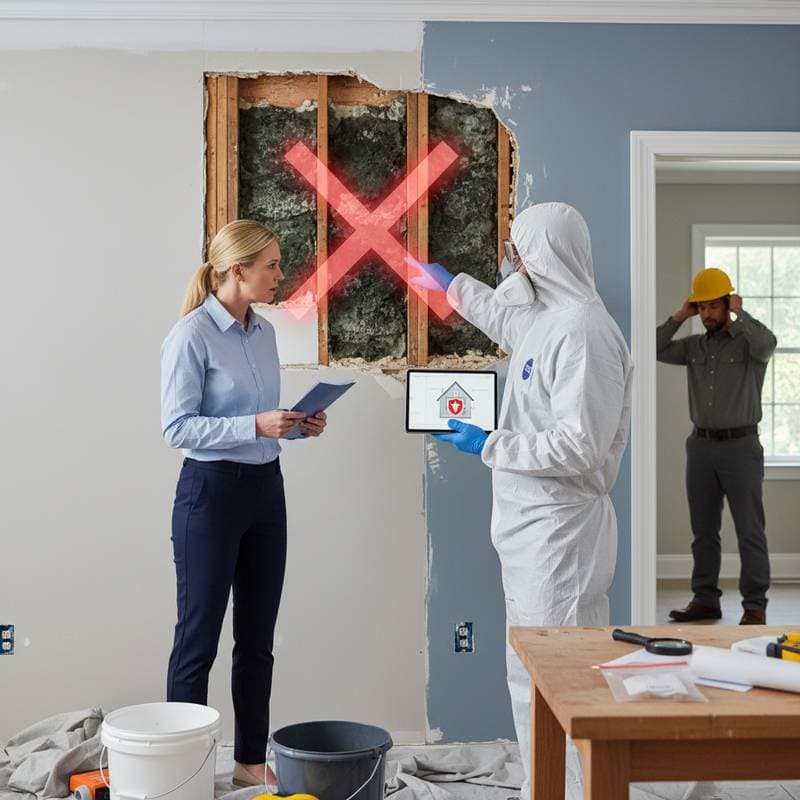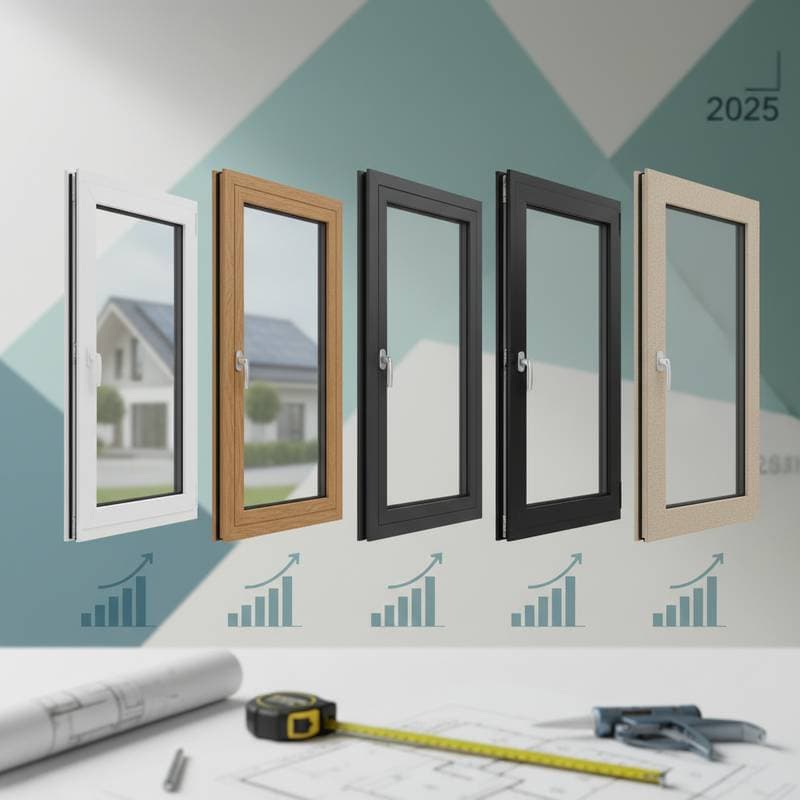The Hidden Risk of Mold in Home Renovations
Homeowners embarking on renovations frequently encounter unexpected challenges that impact budgets and timelines. One such challenge involves mold, which can emerge during construction and complicate insurance claims. A pre-renovation mold inspection serves as a vital preventive measure, documenting the absence of pre-existing mold and ensuring eligibility for coverage if issues arise later.
This inspection not only identifies potential health risks but also establishes a baseline for your property's condition. By obtaining a certified report before work begins, homeowners create a record that insurers recognize, thereby avoiding disputes over pre-existing conditions. Such foresight preserves financial stability and supports smoother project execution.
Why Pre-Renovation Mold Inspections Matter for Insurance
Mold inspections extend beyond basic health assessments; they directly influence insurance outcomes. Many policies exclude coverage for mold that predates the renovation period, classifying it as a pre-existing condition. Without prior documentation, insurers might deny claims for mold-related damages discovered during demolition or structural changes.
A professional inspection generates a comprehensive report detailing the property's mold status at the outset. This document includes visual assessments, air sampling results, and moisture level readings, all of which provide verifiable evidence. Homeowners who secure this report position themselves to contest any coverage denials effectively, potentially saving thousands in remediation costs.
Consider a typical scenario: during a kitchen remodel, workers remove a wall and uncover mold behind it. If no pre-renovation inspection occurred, the insurer could argue the mold existed beforehand, leaving the homeowner responsible for removal and repairs. In contrast, a clear inspection report shifts the burden, confirming the mold developed post-renovation due to construction activities.
Building a Foundation of Mold Prevention
Preventing mold requires attention to environmental factors that foster its growth, such as excess moisture and poor airflow. Homeowners should integrate these checks into routine maintenance, particularly before launching renovation projects. Addressing vulnerabilities early minimizes the likelihood of interruptions and associated expenses.
Start with a thorough visual survey of high-risk areas, including basements, attics, bathrooms, and spaces near plumbing fixtures. Look for discoloration on walls, bulging paint, or persistent dampness in carpets. These indicators often signal underlying issues that could escalate during renovations.
To maintain optimal conditions:
- Monitor and repair any water intrusions immediately, such as roof leaks or faulty seals around windows.
- Ensure adequate ventilation by installing exhaust fans in moisture-prone rooms and cleaning dryer vents annually.
- Use dehumidifiers to regulate indoor humidity, aiming for levels between 30 and 50 percent.
- Apply mold-resistant paints and sealants to surfaces during pre-renovation preparations.
Implementing these practices not only reduces mold risks but also enhances the overall durability of your home. Regular adherence to such steps facilitates passing professional inspections with minimal effort.
Weighing DIY Mold Testing Against Professional Services
Homeowners often consider DIY mold testing kits for convenience and cost savings. These products, available at hardware stores, typically involve swab tests or air sampling devices that detect mold spores. While useful for preliminary checks in small areas, they fall short in providing the rigorous documentation required by insurance providers.
Professional inspectors employ advanced equipment, including thermal imaging cameras and borescopes, to detect concealed mold within walls or under flooring. Their reports adhere to industry standards, incorporating laboratory analysis of samples to identify mold types and concentrations. This level of detail proves invaluable when filing claims or negotiating with contractors.
Opt for DIY methods in low-stakes situations, such as routine bathroom cleanings or spot-checking after minor leaks. However, for renovations involving structural alterations—like opening walls or replacing HVAC components—professional involvement becomes essential. The investment in expertise, often ranging from $300 to $1,000 depending on home size, pales in comparison to potential claim denials.
Indicators Requiring Immediate Professional Assessment
Not all mold situations warrant the same response level. Homeowners can manage minor surface mold with household cleaners, but certain signs demand certified intervention to prevent widespread contamination. Recognizing these thresholds ensures timely action and compliance with safety protocols.
Seek professional help under these conditions:
- Visible mold spanning more than 10 square feet, indicating possible structural involvement.
- Evidence of water damage from floods, bursts, or chronic leaks affecting multiple areas.
- Mold presence in heating, ventilation, and air conditioning systems, which can distribute spores throughout the home.
- Reports of health symptoms among occupants, such as respiratory issues or allergic reactions linked to mold exposure.
When engaging a specialist, confirm their certification from organizations like the Indoor Air Quality Association. Request a detailed protocol that includes containment measures to avoid spore spread during inspection. The resulting report should feature timestamped photos, spore count data, and remediation recommendations, all archived for insurance purposes.
Aligning Mold Inspections with Insurance Requirements
Insurance policies differ significantly across providers, yet a common thread involves exclusions for undocumented pre-existing mold. Homeowners must review their coverage details prior to renovations, focusing on sections related to mold, water damage, and renovation endorsements. Understanding these terms prevents surprises and informs the need for inspections.
Contact your insurance agent to clarify requirements for projects exceeding certain scopes, such as additions over 500 square feet or full-system overhauls. Some policies mandate inspections for high-value claims, while others offer incentives like premium discounts for proactive mold management. A pre-renovation report not only fulfills these stipulations but also strengthens your position in disputes.
In cases where mold emerges post-renovation, the inspection serves as a timeline anchor. It demonstrates that conditions were suitable at the start, attributing any growth to renovation-induced factors like temporary humidity spikes. This evidence can expedite claim processing and coverage approvals.
Sustaining Mold Prevention Through Ongoing Maintenance
Renovations mark a fresh start, yet mold prevention demands continued vigilance to protect your investment. Establish a yearly maintenance calendar that includes moisture inspections in vulnerable zones and professional HVAC servicing. Document each activity with dated records and photographs to build a robust history for insurers.
For phased renovation projects, conduct inspections before each segment to account for evolving conditions. After plumbing installations or exterior work, re-evaluate humidity and airflow patterns. Integrating these checks into your routine transforms potential liabilities into assets, enhancing home safety and marketability.
Securing Your Home's Future with Proactive Measures
Pre-renovation mold inspections represent a strategic investment in peace of mind and financial security. By documenting a clean slate, homeowners shield against claim complications and foster environments conducive to successful remodels. Consistent prevention practices further elevate property value, ensuring long-term resilience against moisture threats.
Embrace these steps to navigate renovations confidently, minimizing disruptions and maximizing returns on your efforts.


